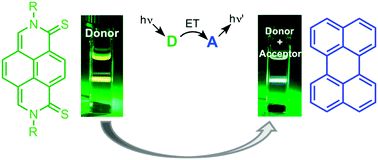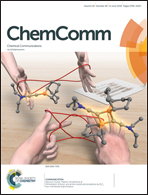New perspectives for triplet–triplet annihilation based photon upconversion using all-organic energy donor & acceptor chromophores†
Abstract
It is recognized that metal organic complexes that serve as sensitizers can present various degrees of challenges viz. synthesis and stability for photonic applications such as triplet–triplet annihilation based photon upconversion (TTA-PUC). Presently, researchers, including our group, are turning their attention toward purely organic triplet sensitizers, which can be handled more easily for photon management science. In this review, we surveyed recently developed all-organic chromophoric systems that were devised and used for TTA-PUC research. Knowing that TTA-PUC research has mainly been focused on the design and synthesis of the triplet sensitizers, we detailed the underlying photophysics and thermodynamics that served as the starting point for the synthesis of the purely organic chromophores in question. Accordingly, this review details triplet sensitizers that operate on (i) spin–orbit coupling or heavy atom effect, (ii) Baird-type aromaticity and antiaromaticity, (iii) open-shell characteristics or doublet excited state and (iv) thermally activated delayed fluorescence.



 Please wait while we load your content...
Please wait while we load your content...
